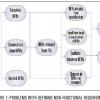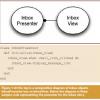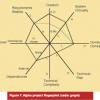|
|
Hurry Up & Wait There are no industry standards for Web response times. How long a user is willing to wait for a Web page to load depends on any number of variables and conditions. Find out how to determine and quantify performance criteria and use those criteria to create happy customers.
|
|
 |
Piles of Sand When was the last time you thought about floating-point arithmetic? Chuck Allison says in order to attain maximum accuracy we need to brush up on our floating-point number knowledge and get back to our roots.
|
|
|
|
Feedback without Fear Does the word "feedback" make you cringe? How about "configuration management"? Steve Berczuk has a pain-free plan for using your build environments and software configuration management system to provide the feedback that is essential to a successful agile project.
|
|
|
|
Evidence for Evolution What important lessons can we learn from the evolution of the programming language Lisp? Brian Marick recounts the environment that enabled its creation and recommends we incorporate some of the Lisper practices into our own projects.
|
|
 |
Know What's at Stake Everyone knows the importance of well-defined functional requirements. We want our products to work, don't we? But how many of us are paying as much attention to defining our non-functional requirements? In this historically focused feature, we learn from past mistakes the potentially disastrous results of inadequately tested NFRs.
|
|
 |
The Roof Is Going to Go As one poor German tourist can attest, idioms don't translate. But Chuck Allison thinks programmers should become "native speakers" of the programming languages they use. This includes using and understanding them, idioms and all.
|
|
 |
The Exceptional Exception So much more than a bucket for your errors, exceptions can be a valuable tool that lets you communicate to your clients not only that there is a problem but why and where the code failed.
|
|
 |
Big, Complex, and Tested? Just Say "When": Software Development Using Presenter First Looking to bridge the gap between code and customers? David Crosby and Carl Erickson elaborate on the benefits of an approach called Presenter First, a simple technique that can be repeated as many times as needed to get the job done.
|
|
 |
The Case of the Missing Fingerprint: Solve the Mystery of Successful End-of-Project Retrospectives Through this tale of a planning spreadsheet and its effect on three different projects, learn the impact a single decision can have on a project--and pick up some helpful tools like fingerprint graphs and project timelines along the way.
|
|
|
|
One Step Back ... Two Steps Forward A change to code that previously was working may introduce new failures. Testing for regression can catch these failures, find new problems, and identify opportunities to improve your test design.
|
|

